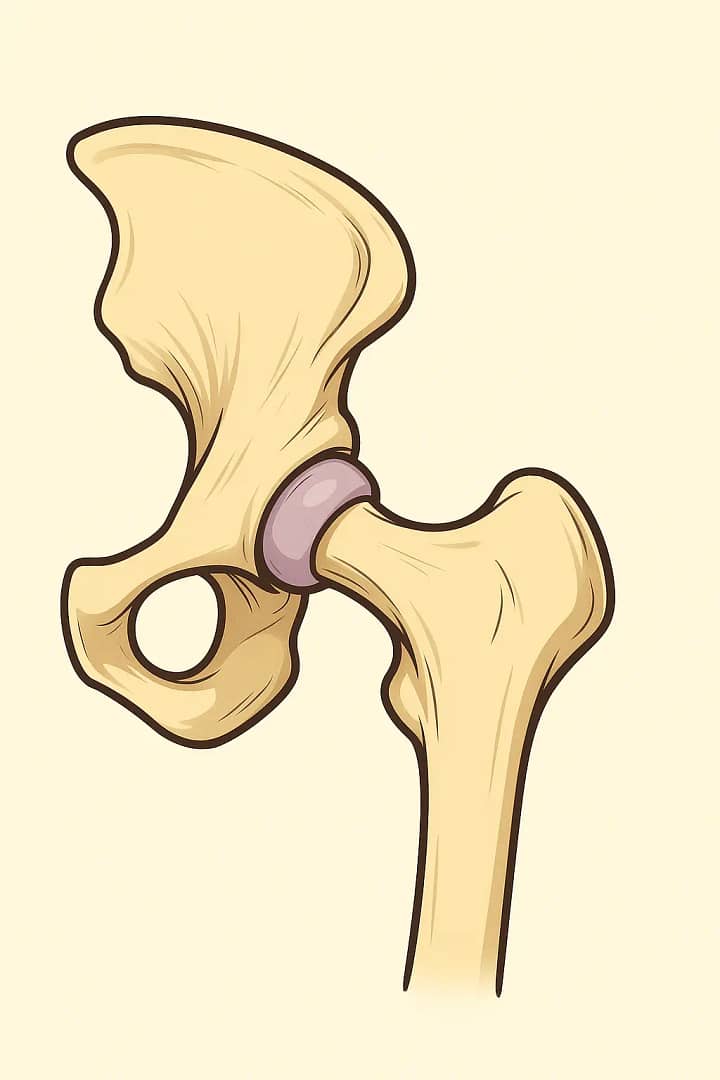The Sumo Deadlift: Cheating, or Essential for Some?
Why the sumo deadlift may be an essential option for those that can’t deadlift without pain
The sumo deadlift. It’s cheating, right?
With its wide stance and turned out toes, it is often considered a controversial variation to the conventional deadlift. While it is a legitimate and effective means of training a long list of prime movers, the stigma towards it made me avoid it for so long.
I have always used the conventional deadlift. And while it made me stronger, I also accrued a number of injuries from it, including low back and hip injuries. And after a while, I couldn’t make any more progress in terms of strength. Then I tried sumo deadlifting.
As soon as I started to sumo deadlift, the world just felt right again. I could feel the increase of strength in my lower back, glutes and quad muscles. I could train the sumo deadlift more often because it wouldn’t beat my body up as bad as the conventional version did.
And the strength gains? Well, in a span of 5 years I was able to improve my max conventional deadlift by 10-20 lbs. As soon as I started sumo deadlifting my strength went up in BOTH lifts. I easily added another 50lbs to my deadlift.
So is it cheating? I don’t care. It allows me to train the deadlift without pain, and whenever I return to the conventional deadlift, my personal bests in terms of strength continue to improve.
So what are the major differences between the two and why is the sumo deadlift such a beneficial variation of the deadlift?
The Sumo Deadlift
The sumo deadlift is a popular alternative to the conventional deadlift. Some believe the sumo deadlift is cheating. For me, it’s essential. It is a hip friendly variation of deadlift for someone with retroverted hips. If you’re not sure what I mean when I refer to hip retroversion, check out my article here*(not linked yet).
Essentially, the sumo deadlift involves positioning your legs to the outside of your hands. In a conventional deadlift, you must place your hands outside of our legs.
Because of this foot position, the sumo deadlift puts more emphasis on the quadriceps and glutes and puts less strain on the lower back which makes it a great movement for people who are looking for overall strength with less detriment to the lumbar spine.
Key Differences from a Conventional Deadlift
The most notable difference between the two forms of deadlift is that the foot position of the sumo deadlift is wide enough so that the legs are outside of the arms during the set up. In a conventional deadlift, when you reach down for the bar, your arms are outside of your legs which are usually at shoulder width or slightly wider. Also in a sumo deadlift, your toes point outward at a 45 degree angle, whereas in a conventional deadlift the toes are usually pointing forward.
This foot position changes the angle of the torso and thus changes the muscles that are emphasized.
Muscles Targeted in a Conventional Deadlift
- Hamstrings
- Glutes
- Lower Back
- Upper Back and Traps
- Quads
Muscles Targeted in a Sumo Deadlift
- Glutes
- Quads
- Adductors
- Lower Back
- Upper Back and Traps
Even though both forms of deadlift target the posterior chain, the wider foot position of the sumo deadlift allows you to keep your torso more upright during the movement, taking some tension off the lower back and putting more emphasis on the hip and leg muscles. Whereas the lower back and hamstrings are more of the focus during a conventional deadlift.
Both variations are effective at building muscle and strength, but the sumo deadlift, thanks to the angle of the torso, may have more benefit to athletic performance and may be more forgiving for those with chronic back pain.
Speaking from experience, I would always have hip and back pain when I would deadlift conventionally. As soon as I opened up my legs wider, I started to feel the muscles working rather than joint pain.
How to perform the Sumo Deadlift
- Set your stance by positioning your feet wider than shoulder width apart. Point your toes outward at a 45 degree angle. The barbell should be directly over the middle of your feet when you look down. Your knees should be tracking over your toes and pointing in the same direction.
- Reach down and grab the bar with your hands inside of your knees at shoulder width or slightly narrower depending on preference. You can use an overhand grip or a mixed grip with one palm facing away from you to improve your ability to grip the bar.
- Before lifting, take a breath in to brace your midsection, as if someone is about to punch you in the stomach. Pull your shoulder blades back and down.
- Begin to lift the bar by pushing your heels through the floor. Depending on how far out you have your feet, you may want to consider “spreading the floor” rather than push straight down. Keep the bar close to you as you stand up. Stay patient. Don’t let your hips shoot upward first. Your shoulders and hips should rise together.
- Stand tall with shoulders back. Try not to round at the upper back.
- Lower the weight by breaking at the hips first then the knees, still keeping your chest tall. Set the bar down with control. Avoid letting the bar bounce. Repeat for the desired reps.
Advanced Tips
- Generate tension when setting up. Wedge your hips. Use the bar to pull yourself into position. You are a car jack, and your hips are the fulcrum.
- Stay patient. The sumo deadlift is not a “grip and rip” exercise. Instead, you want to use the bar to help you pull your hips lower so that your torso can be more upright. If done correctly, you should almost feel as if the bar is rising off of the floor just by getting into a good setup. Once you have generated enough tension and have loaded the necessary muscles, all you have to do is simply stand up.
- Play around with foot positions. You may like a wider stance or a narrower stance. I myself like a little narrower stance with my feet still outside my arms. This is what I’ve found to work best for me.
What are the benefits to sumo deadlift?
There are numerous reasons to add the sumo deadlift to your repertoire IF it works for you.
- The sumo deadlift setup increases space for your hips to move. The wider stance allows you to squat down with less hip flexion. This can reduce the strain on the hip joints and lumbar spine making it more comfortable for those that struggle with deep hip flexion.
- Better glute activation. Pretty simple, here. Because the sumo stance allows for a more upright torso, you can generate more tension from the glutes to “wedge” the bar off the floor, rather than in a conventional deadlift, where the lower back and hamstrings take more of a primary role in pulling the bar off the floor.
- Because the sumo deadlift places less emphasis on the lower back muscles, it generally results in lower central nervous system fatigue. In other words, it is easier to recover from, allowing you to increase the volume or frequency of your sessions, which means greater strength gains, which means… more muscle. Conventional deadlifts tend to require longer recovery times between workout sessions.
- Despite the shorter range of motion, the sumo deadlift can help increase hip mobility because of the emphasis on the mobility and stability of the inner thighs. As you wedge yourself closer to the bar, it will require you to pry your knees apart, forcing your adductor muscles to lengthen and get stronger.
Sets, Reps and Weight
Even though it is less central nervous system (CNS) intensive, the sumo deadlift is still considered a compound movement which means it works multiple prime movers at once.
Sets and Reps for Strength Vs. Hypertrophy
- Strength
- Reps: 1-5
- Sets: 4-6
- Weight: 80-90 percent of your 1 rep max(RM) (160-180lbs if 1RM is 200lbs)
If strength is your goal then you need to do more sets with a lower rep range. Lower rep ranges will allow you to use heavier weights per set, helping you to improve neuromuscular efficiency without adding as much muscle. This protocol is good for individuals who want to be as strong as possible but don’t want to add size because of weight limitations for sports.
- Hypertrophy (Muscle Size)
- Reps 6-12
- Sets 3-4
- Weight 60-70 percent of your 1 rep max (150-160 if 1RM is 200)
If your goal is muscular size and endurance, you need to increase your reps and sets. Volume is the name of the game here. More sets, reps and frequency of training. The sumo deadlift is easy to recover from, however I wouldn’t exceed 2 sessions per week.
Judging How Much Weight to Use
The weight on the bar should challenge you WITHOUT compromising your form. If your goal is strength, increase the load only when you can easily perform 5 reps of a given weight.
If your goal is hypertrophy, you should be able to consistently get 8-10 repetitions of weight before moving up.
My general prescription is 3 sets of 8 repetitions. Keeping your repetitions to 8 at a minimum will force you to keep the resistance to around 60-80 percent of your 1 rep max. This will force you to load your muscles more and place less stress on your joints. This protocol allows you to get the best of both worlds in terms of strength and hypertrophy. Regardless of your goal, make sure you increase weight gradually.
Warm Up
Be sure to warm up properly. Mobility and activation work to the glutes, hamstrings and lower back is key to ensuring you don’t injure yourself when sumo deadlifting. Exercises like glute bridges, romanian deadlifts and the superman exercise can be helpful for priming the right muscles necessary for your success.
Glute Bridge
Romanian Deadlift
Superman
Why the Hate?
So why do people hate the sumo deadlift?
Probably for two reasons.
- It is easier than the conventional deadlift. At any given point, I can pull around 30-40 lbs more with sumo style than I can conventionally. This is because the sumo deadlift involves a shorter range of motion and the setup almost “creates” more space for your hips to work with.
- Some people can’t do it. Just as I mentioned how the sumo deadlift just feels better for myself, some feel the exact opposite about it. I have worked with clients that have said sumo deadlift “just doesn’t feel right”.
The point is, the sumo deadlift is another variation that you should use in your tool belt. If it doesn’t work for you, keep it out of your routine.
It is important to work all muscles from many different angles. If you only use a muscle and joint one way, then you are bound to cause muscular imbalances so to speak, that will hamper your performance or cause you to have joint pain in one way or another. Your goal should always be to try to be more well rounded.
Conclusion
I am not saying that one variation is better than the other. You need to find what works for you through trial and error. The sumo deadlift is a hip friendly variation of deadlift that you can utilize to your advantage. If you are trying the sumo deadlift for the first time, exercise caution and keep the resistance light.
By emphasizing a wider stance, more upright torso and different muscle recruitment patterns, the sumo deadlift can help improve your overall lifting mechanics, reduce discomfort and help you build strength in a way that is better suited for you.
Key Takeaways
References:
- Escamilla RF, Francisco AC, Kayes AV, Speer KP, Moorman CT 3rd. An electromyographic analysis of sumo and conventional style deadlifts. Med Sci Sports Exerc. 2002 Apr;34(4):682-8.
- Ramirez VJ, Bazrgari B, Gao F, Samaan M. Low Back Biomechanics during Repetitive Deadlifts: A Narrative Review. IISE Trans Occup Ergon Hum Factors. 2022 Jan-Mar;10(1):34-46. Epub 2022 Jan 7.






